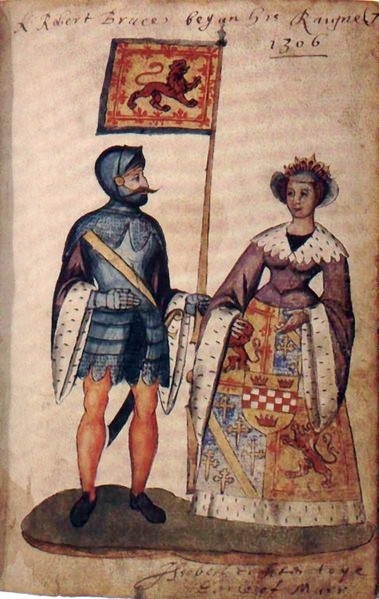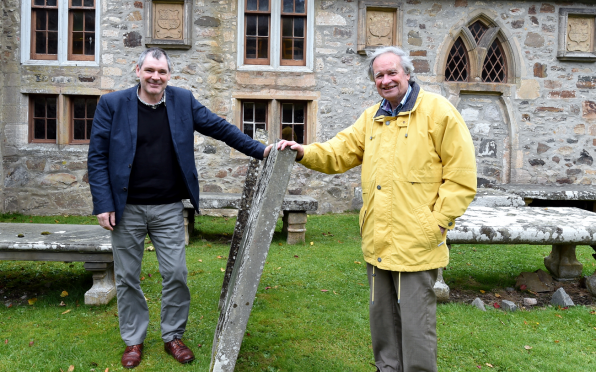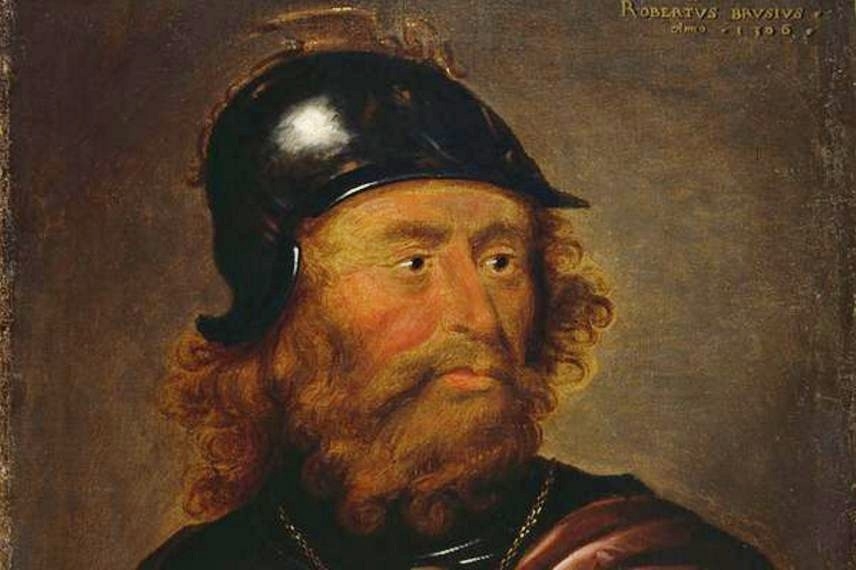It was an act of kindness by a small community which was never forgotten by one the greatest and most fearsome warriors of his generation.
And nearly seven centuries on, a church in Cullen on the Moray coast is still collecting its bequest from King Robert the Bruce.
The 14th Century royal decreed that the then-princely sum of five Scots pounds be given to what is now Cullen and Deskford church for the generosity the congregation showed after the death of his wife.
Elizabeth de Burgh died after falling from her horse while visiting the Auld Kirk in Cullen – which was a royal residence at the time – in 1327.
Preparations were made to take her body to the royals’ traditional burial ground at Dunfermline Abbey.
But concerns were raised by locals that her remains may not survive the journey intact, and plans were made to ensure the dead queen was taken care of.
Her internal organs were removed and taken separately to Fife for the funeral.
Generorsity of Cullen church still remembered
Overwhelmed by the gesture from the congregation, Robert the Bruce bestowed money on the church so that she could be remembered every year on the Moray coast in Cullen.
The king promised that the sum would be “for all eternity”.
Tomorrow prayers will be said in the queen’s honour again at a touching memorial service which will also remember locals lost during the past year.
The Rev Douglas Stevenson, minister at Cullen and Deskford Church, said: “King Robert left an endowment for the saying of masses for the soul of his deceased queen.
“There was a very powerful belief at the time that if prayers weren’t said for those who had died they would never get to heaven.
“This money was paid continuously to the incumbent priest, or minister.
“The original endowment of five Scots pounds was augmented by Mary Queen of Scots in 1543, providing 33 shillings and four pennies, to pray for Elizabeth’s soul.”
The bequest has been paid by different bodies through the centuries, including town councils, but to this day the congregation still receives the sum of £2.10 from Moray Council every year.
Mr Stevenson added: “What we try to do is hold a service nearest Elizabeth’s anniversary and not only pray for her but more importantly pray for those who have lost a loved one.
“Their names are simply read out, prayers are said and candles are lit.”
Robert the Bruce is not the Cullen kirk’s only link to famous figures from Scotland’s past.
It can trace its roots back to 1236, making it one of the oldest church buildings in the country.
Days before the battle of Culloden in 1745 Bonnie Prince Charlie was refused entry to the parish due to the Seafield family being Hanoverian sympathisers.

When the Duke of Cumberland arrived shortly after, he was welcomed with open arms.
Senior elder James Findlay is fascinated by the church’s rich history.
He said: “It’s really fantastic. It’s such an interesting place.
“We have written correspondence between the bishops of Moray and Aberdeen dating back to the 14th century about whose jurisdiction we would fall under.
“It’s great to celebrate these kinds of things.”
The memorial service for prayers for Elizabeth and lost loved ones will take place in the Auld Kirk in Cullen tomorrow at 3pm.
History of Robert the Bruce
Robert the Bruce is one of the most famous characters from Scottish history.
The man who would go on to lead his army to the famous victory at the Battle of Bannockburn which sealed independence for the Scots was born in Ayrshire.
In the absence of a king in the early 14th century his noble family staked its claim to the throne.
Robert took part in William Wallace’s revolt against the invaders from England and picked up the mantle following his death.
His first wife was Isabella of Mar, whose family hailed from Kildrummy Castle in Aberdeenshire.
However, tragedy was to hit the family when she died shortly after giving birth to the couple’s first daughter.
Robert’s second wife, Elizabeth de Burgh was born in Ireland.
The couple married in 1306 at Scone and were crowned as king and queen, in defiance of the English.
After securing independence for Scotland in 1314 the newly-installed king had further conflicts with forces south of the border and then Ireland.
Elizabeth was imprisoned for eight years in 1306 before she was reunited with her husband following Bannockburn.
Robert died just two years after his queen in 1329 at the age of 54.
The couple were buried together at Dunfermline Abbey.


Conversation